|
What
is a macro lens?
Most lenses
have a limited focusing range and while they focus from
infinity they can not focus on objects closer than a certain fixed point.
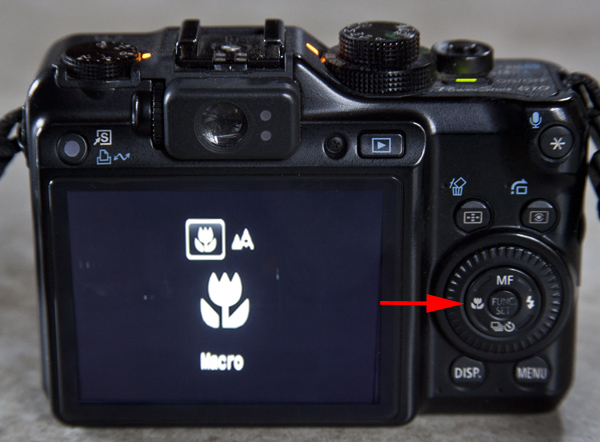
Most compact digital cameras allow the operator to select a close up icon, in this case the flower symbol, that moves this closest focus point forward - in the process - the lens can not focus on objects further away to infinity. This is why this setting is lost when the camera is turned off and the setting return to default. |
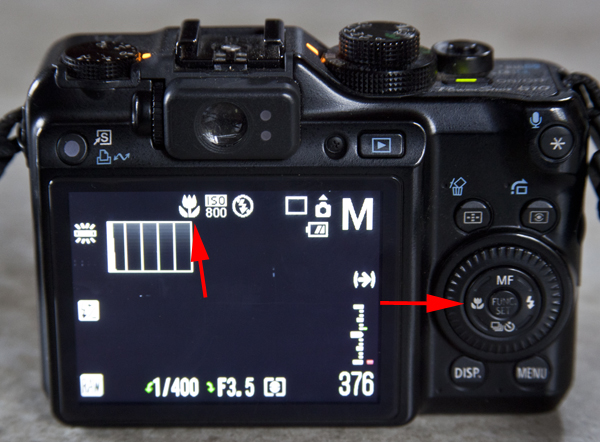
The icon often appears as a flower. |
With SLR lenses, we might see this marked on the focus scale
As the focal length or power of the lens ( the mm size of the lens) is increased this closest focus point is located further back.
So with this fixed focal length 50mm lens the closest distance is 0.45 of a meter
|
 |
| While with this 100mm to 300mm zoom lens the closest distance is further back at 1.5meters |
 |
| With this 19 - 35mm wide angle lens the closest distance is moved forward to 0.5 meters |
 |
| |
|
| Some lenses have an extended focus facility that allows limited macro focus - often this is marked with M for MACRO on the lens barrel. |
 |
| |
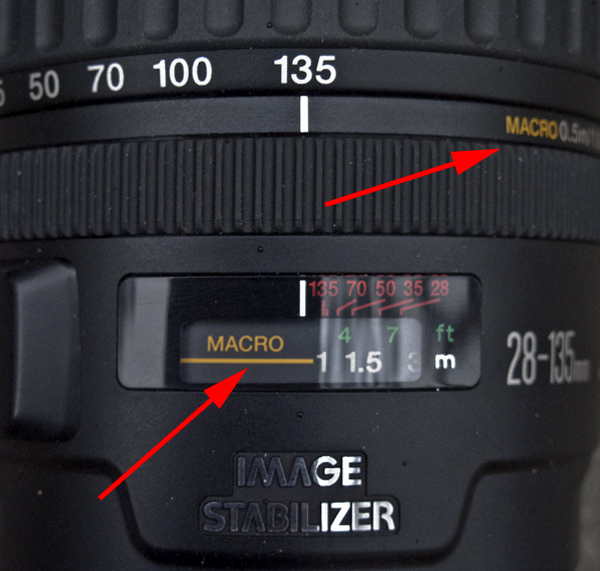 |
To a certain point we can gain more apparent focus by stopping the aperture of the lens down to gain depth of field when set on the closest distance, this can help shift the sharp elements of the subject forward, but it does have limitations.
With a SLR camera, this focus point can be extended by inserting an extension tube ( which is basically a hollow section of tube) between the
camera and the lens - with this inserted the optics are
altered and the ability of the lens to continue to focus
to infinity is greatly reduced or eliminated but it can focus much closer
to a subject.
Extension
Rings
While they
provide a close focus, extension rings have limitations
in only having a very limited focus range - often the extension
ring has the ability to be broken into several pieces that
allow a greater range of close focus distances.
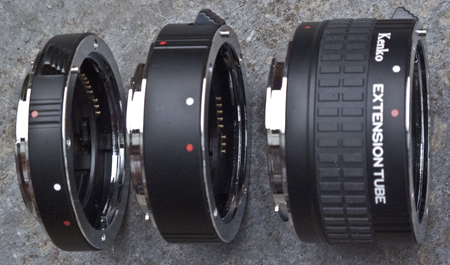
3 piece Kenko Extension tube -
The more tubes that are added the closer you can focus, so you insert the right combination of tubes to achieve the desired effect.
When using these tubes it can be difficult to locket the subject in the viewfinder - everything can appear out of focus - As a technique to find the subject in the viewfinder move the camera position towards the subject until it falls into focus.
|
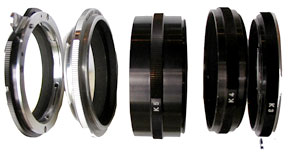
A set of Nikon K tubes - extension rings for a film SLR
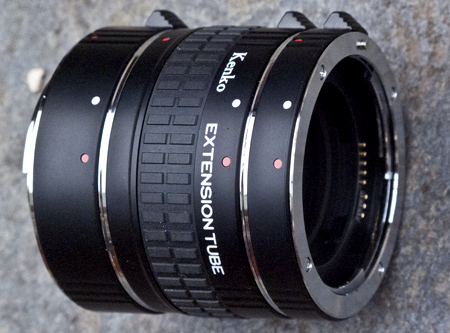
Each section can be used individually, or in various combinations |
Macro lens
Focal length and light
A problem that arises when using attaching a short focal length lens to an extension tube is that the focusing distance may be so close to the subject that it causes a shadow on the object being photographed. To solve this problem using a longer focal length lens moves the camera position back and allows light to reach the object being photographed.
By
contrast, a specifically designed Macro lens is designed to have this extended close
up focus built into the lens and generally allow the lens
to be focused from infinity to a close up distance that records
the subject at a ratio of 1 to 1.


Another
way to extend this focus distance is to use a Bellows
unit
this extreme close up of trichome cells on the bract of a Tillandsia plant was shot with a bellows unit and a series of extension rings. |
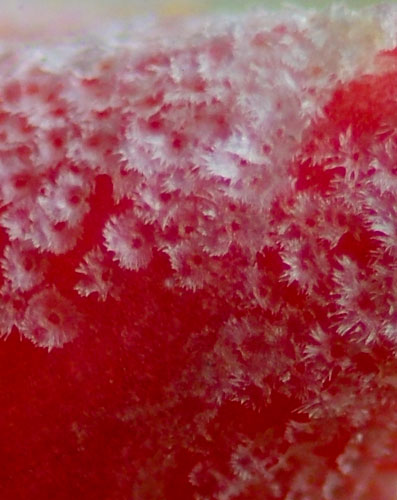 |
Macro is a fascinating area of photography and brings up issues of critical focus. It raises a whole range of issues that relate to some basic optical principles.
Three things affect depth of field.
Subject distance. the closer the lens is to a subject the less depth of field we have. With Macro work, this becomes an ever increasing problem. The closer we go to enlarger the subject to fill the frame, the less depth of field we have.
|
 |
An answer might be to use a longer focal length or more powerful lens. However, the longer the lens the less depth of field we have. ie. a 100mm lens has less depth of field than a 50mm. So one advantage tends to cancel out the other. Also if we use a short focal length lens and move closer to the subject, we can actually reach a point we we begin to shade the subject and the illumination drops off.
So we might look to use a longer lens that allows us to work from a more comfortable distance and not effect the subject illumination. |
 |
The aperture we use also has an effect on the depth of field - the wider open the aperture the less depth of field we have or things in focus, or if we stop the lens down to a small aperture we gain depth of field.
We can see this in an image where part of the subject is out of focus. |
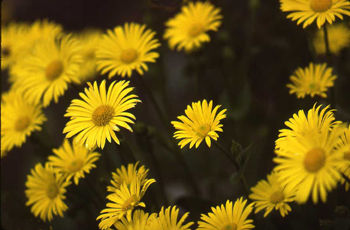 |
So with macro work we might be using a longer lens and very close up, which can raise problems with camera shake and or movement of the subject in the wind or the like. To overcome the associated problems some photographers use a flash for the exposure rather than natural light. The flash delivers a very high intensity of light and allows the lens to be stopped down and give a much greater depth of field. It also stops action sharply like an insect in flight or a flower moving in the wind.
You don't have to aim the flash directly at the subject, you can place it to the side to show more texture on the subject and use a small reflector to bounce light back in to fill any shadows.
While some lenses have a built in macro facility, to gain the close focus you might need special accessories like close up filters – which fit on the end of the lens, extension rings, or a bellows unit – which both fit between the lens and the camera body. You can also buy a special ring that allows your lens to be reversed so the part that normally fits on the camera is facing outwards to the subject. It looks queer, but this gives a sharper image because of the way the lens is ground and the close nature of the subject.
If you get very close to the subject and photograph it larger than 1:1 or larger than life on the neg, all your aperture settings will have to be recalculated. You can find info on this on the web.
Be aware that as we move the camera closer to the subject
- the depth of field is reduced.
| For
the Body
Symbols project I mainly used a 55mm Macro lens
which gave me the ability to focus on the subject
from a much closer distance. |
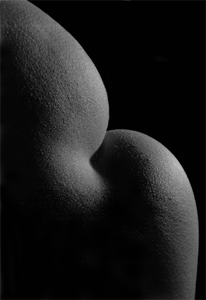 |
Want to learn more? - do a workshop or one on one with Lloyd Godman
|